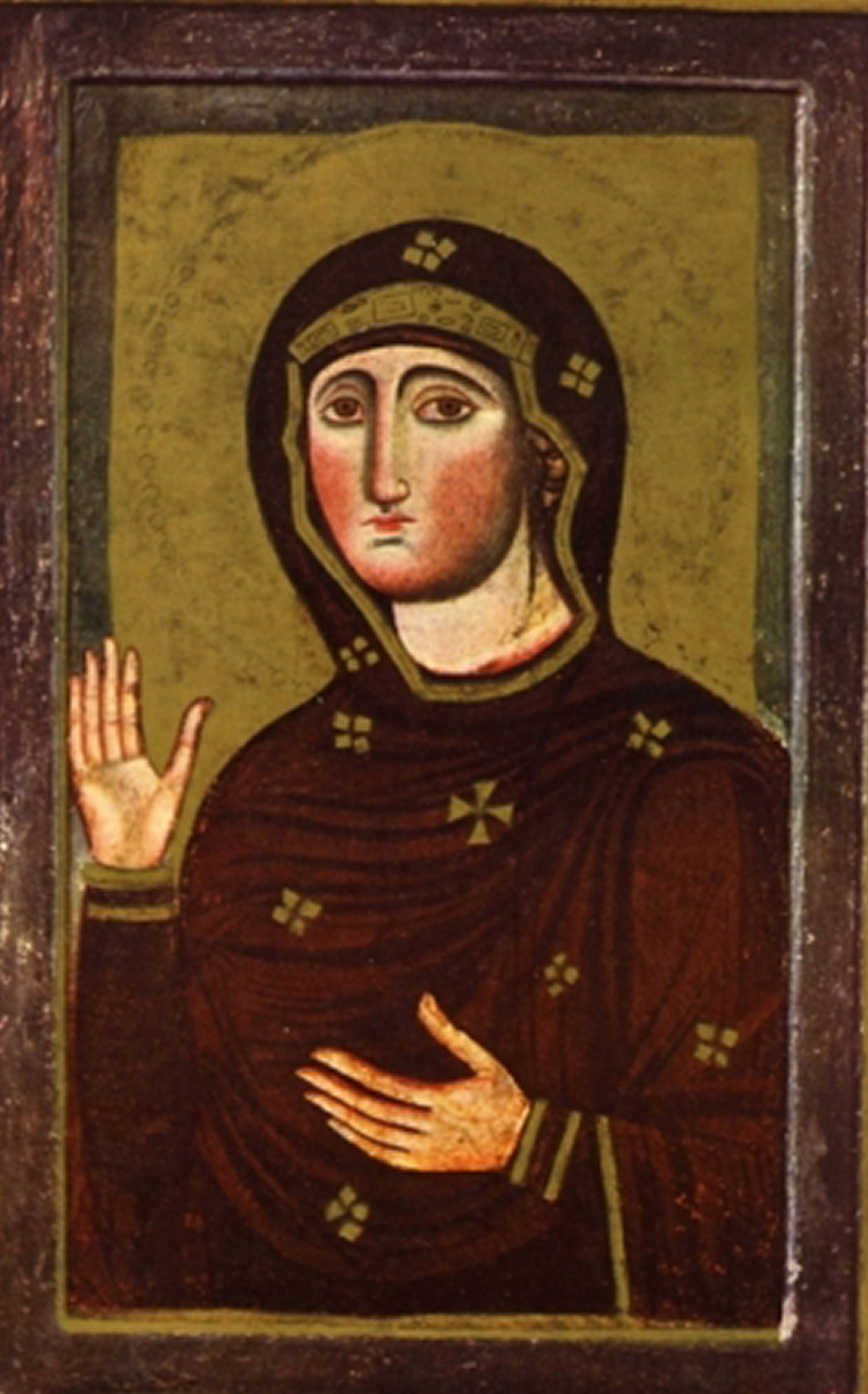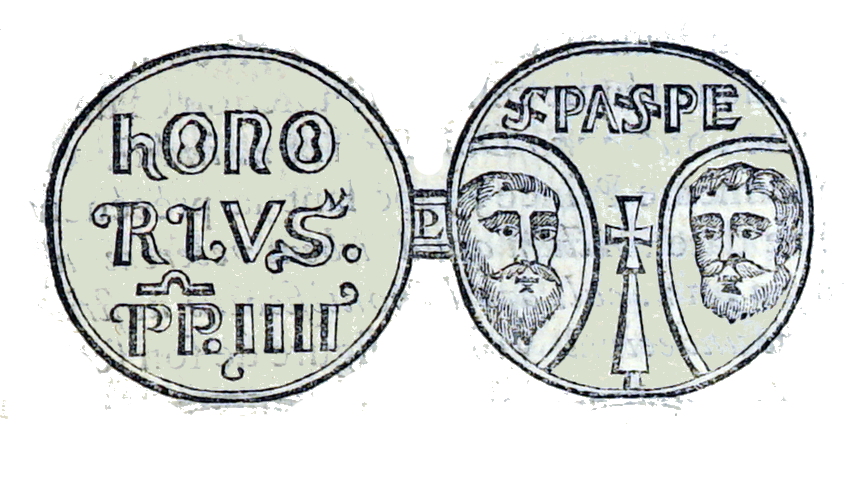|
Luca Savelli
Luca Savelli was a Roman senator who in 1234 sacked the Lateran. He was born in 1190, died in 1266, and was married to Vana Aldobrandeschi. Luca's tomb is found at the Santa Maria in Aracoeli "Our Lady of The Heavenly Altar", along with his wife, and his son Giacomo (Honorius IV). The papal tomb was actually designed for Luca's wife Vana. Another son, Pandolfo, was the ''podestà'' of Viterbo Viterbo (; Viterbese: ; lat-med, Viterbium) is a city and ''comune'' in the Lazio region of central Italy, the capital of the province of Viterbo. It conquered and absorbed the neighboring town of Ferento (see Ferentium) in its early history ... (1275). Ancient Roman senators 1190 births 1266 deaths {{AncientRome-bio-stub ... [...More Info...] [...Related Items...] OR: [Wikipedia] [Google] [Baidu] |
Savelli Family
The House of Savelli (de Sabellis in documents) were a rich and influential Roman aristocratic family who rose to prominence in the 13th century, the youngest is still alive today (1626–2022). History The family, who held the lordship of Palombara Sabina, took their name from the '' rocca'' (castle) of Sabellum, near Albano, which had belonged to the counts of Tusculum before it passed to the Savelli. Early modern genealogies of the Savelli, such as the unpublished manuscript "eulogistic treatise" compiled by Onofrio Panvinio, drew connections to Pope Benedict II, a possible but undocumentable connection, and even to the cognomen Sabellius of Antiquity. They provided at least two popes: Cencio Savelli, Pope Honorius III (1216–1227) and Giacomo Savelli, Honorius IV (1285–1287). His father, Luca Savelli, was a Roman senator and sacked the Lateran in 1234. Luca's decision to side with Emperor Frederick II against Honorius III's successor, Gregory, brought various material ... [...More Info...] [...Related Items...] OR: [Wikipedia] [Google] [Baidu] |
Lateran
250px, Basilica and Palace - side view Lateran and Laterano are the shared names of several buildings in Rome. The properties were once owned by the Lateranus family of the Roman Empire. The Laterani lost their properties to Emperor Constantine who gave them to the Catholic Church in 311. The most famous Lateran buildings are the Lateran Palace, once called the Palace of the Popes, and the Archbasilica of Saint John Lateran, the cathedral of Rome, which although part of Italy is a property of the Holy See, which has extraterritorial privileges as a result of the 1929 Lateran Treaty. As the official ecclesiastical seat of the pope, Saint John Lateran is the papal ''cathedra''. The Lateran is Christendom's earliest basilica. Attached to the basilica is the Lateran Baptistery, one of the oldest in Christendom. Other constituent parts of the Lateran complex are the building of the Scala Sancta with the Sancta Sanctorum and the Triclinium of Pope Leo III. The Pontifical Lateran Uni ... [...More Info...] [...Related Items...] OR: [Wikipedia] [Google] [Baidu] |
Vana Aldobrandeschi
{{disambiguation, geo ...
Vana (or with diacrits, e.g. Váňa) may refer to: * Vana, Gujarat, a village on Saraushtra peninsula, western India * Vana State, a former princely state whose seat was in Vana, Gujarat * Vana, Iran, a village in Mazandaran Province, Iran * Váňa, a Czech surname * Vána, a fictional character from J. R. R. Tolkien's legendarium * Vana, wife of the legendary Swedish king Sveigðir Sveigðir, ''Sveigder'' or ''Swegde'' (Old Norse "Waving One"McKinnell (2005:70).) was a Sweden, Swedish monarch, king of the House of Yngling in Norse mythology. He was the son of Fjölner, whom he succeeded as king, and he married Vana of Vanahe ... [...More Info...] [...Related Items...] OR: [Wikipedia] [Google] [Baidu] |
Santa Maria In Aracoeli
The Basilica of St. Mary of the Altar of Heaven ( la, Basilica Sanctae Mariae de Ara coeli in Capitolio, it, Basilica di Santa Maria in Ara coeli al Campidoglio) is a titular basilica in Rome, located on the highest summit of the Campidoglio. It is still the designated Church of the city council of Rome, which uses the ancient title of ''Senatus Populusque Romanus''. The present Cardinal Priest of the ''Titulus Sanctae Mariae de Aracoeli'' is Salvatore De Giorgi. The shrine is known for housing relics belonging to Saint Helena, mother of Emperor Constantine, various minor relics from the Holy Sepulchre, both the canonically crowned images of ''Nostra Signora di Mano di Oro di Aracoeli'' (1636) on the high altar and the Santo Bambino of Aracoeli (1897). History Originally the church was named ''Sancta Maria in Capitolio'', since it was sited on the Capitoline Hill (Campidoglio, in Italian) of Ancient Rome; by the 14th century it had been renamed. A medieval legend included ... [...More Info...] [...Related Items...] OR: [Wikipedia] [Google] [Baidu] |
Honorius IV
Pope Honorius IV (c. 1210 – 3 April 1287), born Giacomo Savelli, was head of the Catholic Church and ruler of the Papal States from 2 April 1285 to his death in 1287. During his pontificate he largely continued to pursue the pro-French political policy of his predecessor, Martin IV. Early career Giacomo Savelli was born in Rome into the rich and influential family of the Savelli. His father was Luca Savelli, who died as Senator of Rome in 1266. His mother Joanna belonged to the Aldobrandeschi family. He studied at the University of Paris, and held a prebend and a canonry at the cathedral of Châlons-sur-Marne. Later he obtained the benefice of rector at the church of Berton in the Diocese of Norwich in England, a nation he never visited. In 1261 he was created Cardinal Deacon of Santa Maria in Cosmedin by Pope Urban IV, who also appointed him papal prefect in Tuscany and captain of the papal army. Cardinal Savelli pursued a diplomatic career. Pope Clement IV sent him and t ... [...More Info...] [...Related Items...] OR: [Wikipedia] [Google] [Baidu] |
Pandolfo Savelli
Pandolfo Savelli (died 1306) was a member of the Savelli family, a son of Luca Savelli and brother of Pope Honorius IV. He held the office of ''podestà'' of Viterbo in 1275 and was on several occasions a Roman senator. In 1297 he strove in vain to mediate peace between Pope Boniface VIII and the Colonna The House of Colonna, also known as ''Sciarrillo'' or ''Sciarra'', is an Italian noble family, forming part of the papal nobility. It was powerful in medieval and Renaissance Rome, supplying one pope (Martin V) and many other church and politica .... ''Dizionario Biografico degli Italiani'', Treccani References {{DEFAULTSORT:Savelli, Pandolfo[...More Info...] [...Related Items...] OR: [Wikipedia] [Google] [Baidu] |
Podestà
Podestà (, English: Potestate, Podesta) was the name given to the holder of the highest civil office in the government of the cities of Central and Northern Italy during the Late Middle Ages. Sometimes, it meant the chief magistrate of a city state, the counterpart to similar positions in other cities that went by other names, e.g. ''rettori'' ("rectors"). In the following centuries up to 1918, the term was used to designate the head of the municipal administration, particularly in the Italian-speaking territories of the Austrian Empire. The title was taken up again during the Fascist regime with the same meaning. The podestà's office, its duration and the residence and the local jurisdiction were called ''podesteria'', especially during the Middle Ages, and in later centuries, more rarely during the fascist regime. Currently, ''podestà'' is the title of mayors in Italian-speaking municipalities of Graubünden in Switzerland, but is not the case for the rest of the C ... [...More Info...] [...Related Items...] OR: [Wikipedia] [Google] [Baidu] |
Viterbo
Viterbo (; Viterbese: ; lat-med, Viterbium) is a city and ''comune'' in the Lazio region of central Italy, the capital of the province of Viterbo. It conquered and absorbed the neighboring town of Ferento (see Ferentium) in its early history. It is approximately north of GRA (Rome) on the Via Cassia, and it is surrounded by the Monti Cimini and Monti Volsini. The historic center of the city is surrounded by medieval walls, still intact, built during the 11th and 12th centuries. Entrance to the walled center of the city is through ancient gates. Apart from agriculture, the main resources of Viterbo's area are pottery, marble, and wood. The town is home to the Italian gold reserves, an important Academy of Fine Arts, the University of Tuscia, and the Italian Army's Aviation Command headquarters and training centre. It is located in a wide thermal area, attracting many tourists from the whole of central Italy. History The first report of the new city dates to the eighth century ... [...More Info...] [...Related Items...] OR: [Wikipedia] [Google] [Baidu] |
Ancient Roman Senators
Ancient history is a time period from the beginning of writing and recorded human history to as far as late antiquity. The span of recorded history is roughly 5,000 years, beginning with the Sumerian cuneiform script. Ancient history covers all continents inhabited by humans in the period 3000 BCAD 500. The three-age system periodizes ancient history into the Stone Age, the Bronze Age, and the Iron Age, with recorded history generally considered to begin with the Bronze Age. The start and end of the three ages varies between world regions. In many regions the Bronze Age is generally considered to begin a few centuries prior to 3000 BC, while the end of the Iron Age varies from the early first millennium BC in some regions to the late first millennium AD in others. During the time period of ancient history, the world population was already exponentially increasing due to the Neolithic Revolution, which was in full progress. While in 10,000 BC, the world population stood at ... [...More Info...] [...Related Items...] OR: [Wikipedia] [Google] [Baidu] |
1190 Births , a hypothetical chemical element with atomic number 119
*
{{Number disambiguation ...
119 may refer to: * 119 (number), a natural number * 119 (emergency telephone number) * AD 119, a year in the 2nd century AD * 119 BC, a year in the 2nd century BC * 119 (album), 2012 * 119 (NCT song) * 119 (Show Me the Money song) * 119 (film), a Japanese film, see Naoto Takenaka#Film * 119 (MBTA bus) * List of highways numbered 119 See also * 11/9 (other) * 911 (other) * Ununennium Ununennium, also known as eka-francium or element 119, is the hypothetical chemical element with symbol Uue and atomic number 119. ''Ununennium'' and ''Uue'' are the temporary systematic IUPAC name and symbol respectively, which are used until th ... [...More Info...] [...Related Items...] OR: [Wikipedia] [Google] [Baidu] |




